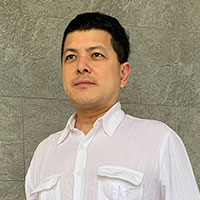BOTH the Filipino and Malaysian polities profess division of governmental powers in which, at least in theory, the legislative, executive and judicial branches of government could check and balance each other such that the democratic precepts of government could (hopefully) be preserved. In actual practice, at least the heads of government of the two neighboring countries come to power differently. In the Philippines, as I understand it, there is no longer a prime minister in the governmental system, so the president is the head of both state and government and is directly elected by popular votes. Members of Congress are elected separately.
In Malaysia, where the British Westminster form of parliamentary democracy WAS inherited from former colonial masters, the voters elect the members of parliament. And the prime minister, who is the head of government, is appointed by the king, who is the head of state, if the former, a parliamentarian, is viewed by the latter as having commanded the support of the parliamentary majority. This system filters down to state level, whereby a chief minister of a state is appointed by the governor or the hereditary ruler of the state, if the latter views the former, a state assembly member, as having commanded the support of the majority of state assembly members. In other words, the viability of a particular executive administration is tied to its enjoying the support of the legislative majority, albeit through the eyes of the head of state, who could either appoint a new head of government who in the head of state’s view has mustered a legislative majority, or, on the advice of the incumbent head of government, dissolve the legislature to pave way for new a general election. Elections in Malaysia are thus not held on fixed dates but essentially at the pleasure of the incumbent administration.
Continue reading with one of these options:
Ad-free access
P 80 per month
(billed annually at P 960)
- Unlimited ad-free access to website articles
- Limited offer: Subscribe today and get digital edition access for free (accessible with up to 3 devices)


